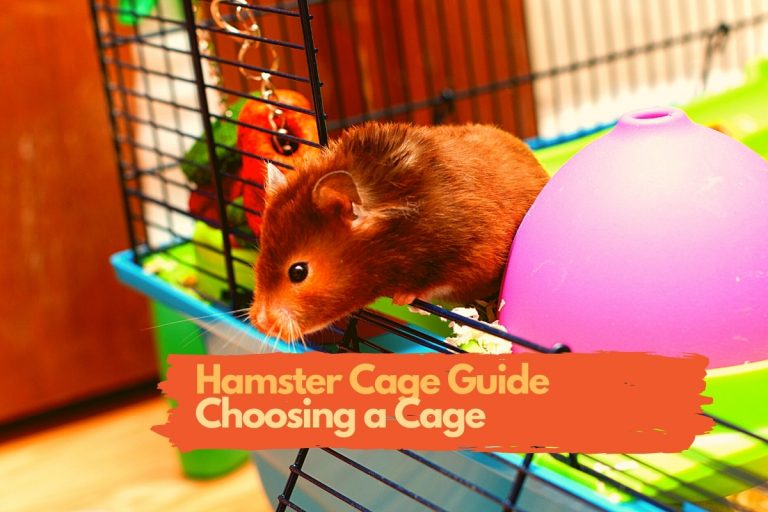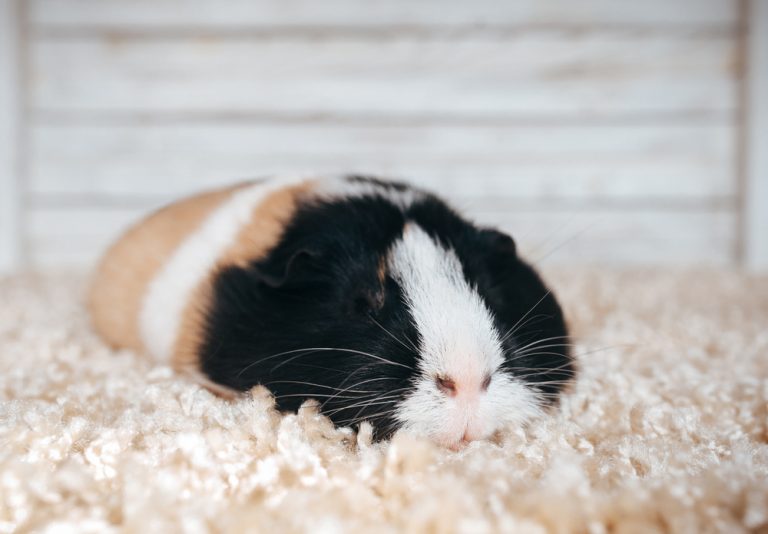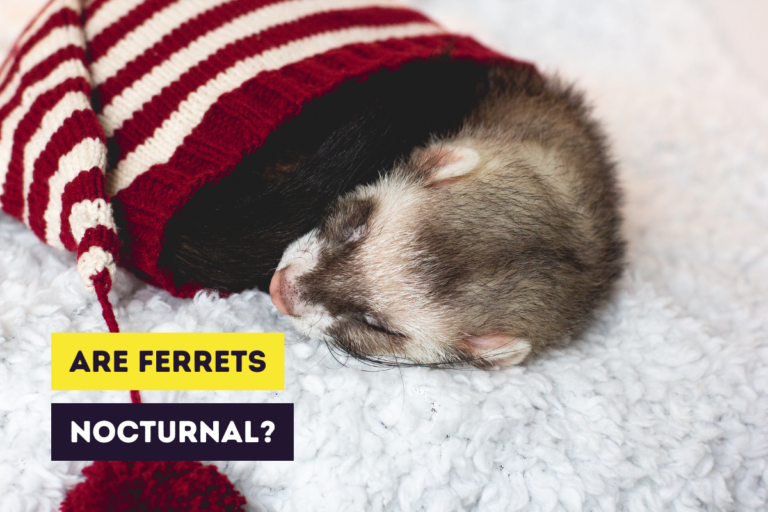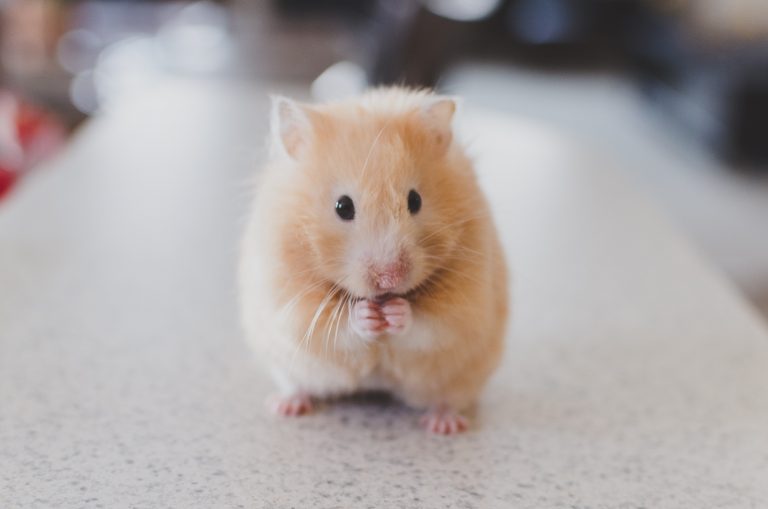Are Hamsters Nocturnal Creatures?
A lot of first time hamster owners are surprised to see that their hamster isn’t that active during the day and fear that it’s nocturnal. Then they might think that the hamster they bought isn’t that good for their lifestyle.
But you are probably an exception! You want to be a little bit better prepared and are interested in a little more background information on the sleeping habits of hamsters. These sleeping habits come down to a difference in behavior. In general, we make a distinction between diurnal, which means active during the day, and nocturnal creatures.
Are hamsters nocturnal? Hamsters are often described as nocturnal pets but most hamsters are in fact crepuscular. This means that they are most active during twilight, this is at dawn and dusk. Some species of hamsters will also have short periods of activity during the day. But, in general, hamsters are considered to be crepuscular.
Since hamsters are crepuscular this means that they will spend a lot of their day time sleeping. This can be a good thing or a bad thing depending on your own lifestyle. In either case, it’s very important to understand your pet’s behavior which is its sleeping habits in this case.
In this article you’ll learn everything there is to know about the sleeping habits of your hamster from why they’re crepuscular to what kind of sleeping habit is good for them.
This site contains affiliate links to products we recommend and use ourselves. We may receive a commission for purchases that you make through these links. If you’re interested in learning more about our affiliate links, please visit our (affiliate) disclaimer.
Why Are Hamsters Crepuscular and Not Nocturnal?
Animals can show diurnal, nocturnal or crepuscular behavior depending on a number of factors. The most important factors that determine the sleeping habits of an animal are:
- the environment
- the status as predator or prey
Hamsters Live in Hot Climates
Most animals adjust their sleeping habits to their environment.
In hot climates, an animal will often sleep during the day to conserve energy. At twilight or during the night they’ll become active and look for food. In cooler climates, most animals will be active during the day and will sleep at night.
Hamsters in the wild live in Europe, the Middle East, and Asia. In general, they live in very hot climates. During the day hamsters stay in their burrows, a network of tunnels beneath the surface. The temperature in these tunnels is a lot lower than outside. Hamsters will live and sleep in these burrows during the day when it’s too hot outside.
At sunset, hamsters will wake up and start their search for food outside. Most hamsters are very active at this point.
As you might know, the desert is an environment of extremes. While it’s extremely hot during the day, the nights can get freezing cold. Hamsters don’t like very high and very low temperatures. Hamsters can even go in a kind of “hibernation” when the temperatures are too low.
Hamsters are happiest at normal room temperatures. In the desert, this kind of temperature will occur at twilight, so at dawn and dusk. At these times it’s not too hot and not too cold for the hamster.
Hamsters Are Prey Animals
Predators and prey adapt their sleeping habits to each other. Predators will be awake at times when they’re prey is available. Prey, on the other hand, will try to avoid the times when their primary predators are out hunting.
You probably guessed that hamsters aren’t predatory in nature and are a so-called prey animal. The hamster has a lot of different predators and is on the menu of birds of prey, canids, snakes and wild cats.
Needless to say that hamsters will try to avoid to be outside when their predators are awake. Most of their predators are nocturnal and it’s natural that they adapted to being awake at the moment when their predators are not yet awake. If hamsters would also be nocturnal they would be awake and looking for food at the same time their predators are. This would be an extremely bad idea for the hamster.
What Are the Consequences of Being Crepuscular?
There are some consequences of the crepuscular nature of hamsters. It’s important to be aware of these consequences:
- hamsters will sleep most of the day with perhaps short periods of activity
- they don’t like to be interrupted during the day
- they will become really active at dawn and dusk
For most people, this will be no problem. If you’re at for work or school during the day your little hamster will be sleeping safe and sound. When you come home in the evening your hamster will just start to wake up. Most likely you can still have a nice dinner and then take care of your hamster by feeding him and giving him attention.
But of course the crepuscular nature of hamsters also has its possible downsides:
- not that suitable for young children that are already in bed when the hamster wakes up
- the cage should be placed in a location that experiences normal day/night light cycle
- if you don’t want to be wakened up during the night, don’t place the cage in a bedroom
- you don’t want to make a lot of noise in the vicinity of the cage during the day
Where Does Your Hamster Sleep?
Your hamster has a natural habit to sleep in a dark burrow beneath the ground. In captivity, it will be extremely difficult to mimic the tunneling network in a hamster cage.
But you can mimic a safe sleeping nest by giving a hamster house. This house can be made out of plastic or unfurnished wood. Although there are store-bought hamster houses made of plastic it’s best to buy or create a wooden house. If your hamster feels the need to nibble on his house, he can then do so safely.
Make sure the hamster house is located at the darkest place in the hamster cage. Most hamsters will stay all day in this little house.
But wait! When I see hamsters in a pet store there are also hamsters that sleep out in the open. What’s up with that?
Indeed you might have noticed this and there are of course a lot of factors that are in play here. Some hamster species, like dwarf hamsters, like to cuddle up and this is not always possible in a hamster house. They make a kind of pile.
Can You Train a Hamster to Sleep at Night?
Although it is possible to change the sleeping habit of a hamster it’s not advised to do so. Hamsters are crepuscular creatures by nature and changing this will be difficult and may lead to stress and sickness of your hamster.
Training a hamster to sleep at night
Feeding at an earlier time
Hamsters love food and will often wake up when you’re putting food in the cage. To wake up your hamster a little earlier you can change the feeding time to be a little bit earlier.
Gradually change the day/night cycle
If there is a form of natural light in the room where the hamster cage is located, your hamster will follow the natural day and night cycle. You can change this by letting your hamster believe it’s night during the day. To do this you can use curtains or blankets that block the light in the room. At night you then should create a light source in the room.
Maintain the changed cycle
Don’t go changing the changed cycle all of a sudden. If you, for some reason, decide to go back to the natural sleeping habit of your hamster, don’t make this happen in a day.
Related Questions
Are hamsters noisy at night?
Hamsters will make noise at night. While not all hamsters are the same, there are a lot of hamsters that need and love to exercise in an exercise wheel. This will make some noise. They will also run around their cage and this can be a little noisy. It’s for this reason recommended to net put the hamster cage in your or your children’s bedroom.
Do hamsters like the dark?
Hamsters like the dark, but not complete darkness. In the wild, they come out at twilight. You don’t have to blind the windows in the room where your hamster cage is located. But do make sure that the cage is not in direct sunlight next to a window as this might heat up the hamster cage.
Can hamsters see in the dark?
Hamsters need dim light to see at night. Their eyes are adapted to see in circumstances where there is little light, not complete darkness. They also use a lot of other senses to find their way at night.






